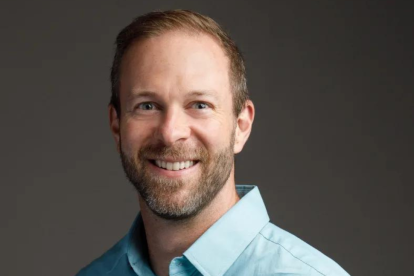Exploring the Benefits of Long-Term Dual Diagnosis Treatment Centers

Co-occurring mental health and substance use disorders affect an estimated 8.9 million people in the United States. Although the mental health community now widely recognizes the need for simultaneous treatment, the scarcity of true dual diagnosis treatment centers means that the vast majority of those who suffer are not getting the care they need. If you are struggling with co-occurring disorders and have not had success in treatment, long-term dual diagnosis treatment could bring you lasting relief through the power of therapeutic community.
Daniel wasn’t like most kids. By the time he entered the fifth grade, his social anxiety and depression had left him quiet, withdrawn, and unable to hold eye contact, making him a prime target for bullying. “Being different in a sea of pre-adolescents was nothing short of a nightmare,” Kathleen Gemmell writes in a powerful profile of Daniel. “Adolescence was then a brick wall that he could not see over.”
Eventually, things changed. Not because Daniel got better. He didn’t. In fact, his depression and anxiety spiraled, bringing him further into a place of unbearable emotion. “Alcohol, prescription narcotics, and marijuana became the loyal friends he so desperately sought. When high, his world was tolerable. Others liked him and he finally fit in.” Getting high, however, didn’t slow the momentum of his mental illnesses, but only fuelled them further, opening up a new world of psychiatric disturbances as he entered adulthood. His drug use transformed his anxiety and depression into psychosis, making life all the more unbearable for him and frightening for his family.
And yet, even as he struggled his way through therapy, he continued to use to fight the demons, new and old, that plagued him, making real progress impossible. It wasn’t until he understood the true relationship between his multiple disorders and underwent truly integrated dual diagnosis treatment that he was able to break free from the pain that had defined his life for so many years. Now, as an adult, he sees a new path for himself, one unencumbered by mental illness and drug use. “I have goals for the future and generally am feeling positive. It’s like I’ve reinvented myself.”
The Need for Simultaneous Treatment
Daniel’s story isn’t unique. According to the National Alliance on Mental Illness,
“About a third of all people experiencing mental illnesses and about half of people living with severe mental illnesses also experience substance abuse … about a third of all alcohol abusers and more than half of all drug abusers report experiencing a mental illness.”
It is now widely acknowledged that mental illness and substance use disorders are deeply intertwined, sharing biological roots and working synergistically to augment each other, as they did for Daniel. As such, both conditions must be addressed at once via dedicated dual diagnosis treatment to create true healing.
But it hasn’t always been that way. Traditionally, mental illness and substance use disorders were treated separately and by different organizations. In the 1980s, however, treatment providers began recognizing that “patients presenting with co-occurring disorders required services beyond their existing capabilities.” Mental health treatment providers were finding that psychiatric disturbances were “compounded by secondary—and equally serious—substance use disorders that mental health facilities were ill-equipped to treat.”
At the same time, substance use disorder treatment facilities saw that their clients were experiencing mental health issues that both interfered with accurate assessment and participation in substance abuse treatment itself. To address these issues, mental health and substance use disorder agencies began to slowly change their programs to better meet the needs of people struggling with co-occurring disorders through the introduction of dual diagnosis treatment.
The Scarcity of Dual Diagnosis Treatment Centers
Since the 1980s, a massive body of research has emerged confirming the value of dual diagnosis treatment; when mental health and substance abuse disorders are treated together, outcomes for both are better and people are more often able to achieve long-term stability. Today, the dual diagnosis model is considered the gold standard for the treatment of co-occurring conditions. But as much as the terms “dual diagnosis” and “integrated treatment” are enthusiastically bandied about, true dual diagnosis treatment can still be hard to come by.
Matthew Peters knows this all too well. Matthew drank regularly and eventually sought help at a local substance abuse clinic. There, he was diagnosed with major depressive disorder—“which was good,” he says. “What is less good is that I was given a prescription for Valium to treat my insomnia.” While his diagnosis opened up the possibilities for finally finding relief from his distress, Valium opened up new possibilities for substance abuse. And despite being aware of his illnesses and actively seeking help, real help was hard to find.
“The most difficult part of finding successful treatment was going through all the failed attempts to treat one condition without treating the other,” Matthew says. “I have been through countless detoxes and rehabs, and a few psychiatric wards over the years. Most of these treated either alcoholism or depression, but seldom both at once.” Indeed, while 8.9 million adults in the US are struggling with co-occurring mental health and substance use disorders, only 7.4% of them are receiving treatment for both conditions.
The Benefits of Long-Term Dual Diagnosis Treatment Centers
Unfortunately, the scarcity of true dual diagnosis treatment centers means that the suffering of millions of people is unnecessarily prolonged. Even those who dedicate themselves entirely to their mental health or substance use disorder program too often find themselves unable to make meaningful, sustainable progress because the full scope of their illness is not being adequately addressed.
For many, this means entering into a cycle of outpatient treatment, hospitalization, and rehab stays that inevitably end in relapse and chip away at your hope for recovery. Simultaneously, both illnesses have time to further develop, creating and reinforcing emotional and behavioral disturbances that are now more firmly rooted than ever before. If you finally do connect with a dual diagnosis treatment program, you may now find that your distress is too deep and complex to be healed within a typical 60-90 day length of stay.
If you are experiencing co-occurring mental health and substance use disorders and have not been able to find relief in other treatment settings,
a long-term dual diagnosis treatment center can reignite your hope for healing. Research has repeatedly shown that long-term dual diagnosis treatment programs drastically improve outcomes for people living with co-occurring disorders.
These programs allow for constant monitoring as well as a controlled environment removed from outside triggers that can encourage substance abuse. At the same time, they are able to identify the unique needs that arise from the co-occurring nature of mental health and substance abuse disorders in your individual experience and shape the treatment to address those needs. This is particularly valuable for people whose diagnoses are not entirely clear, as symptoms of drug use and mental illness may mimic each other and complicate accurate assessment in early phases of treatment. The duration of these programs makes it possible to continuously tailor your care to your changing needs as you move through the stages of recovery.
The Power of Therapeutic Community
But long-term dual diagnosis treatment also does something else: it offers you the opportunity to participate in therapeutic approaches that are not possible in short-term formats. For people with co-occurring disorders, one of the most powerful of these is the therapeutic community. As the National Institute on Drug Abuse explains, therapeutic communities are “highly structured programs” in which “the entire community, including treatment staff and those in recovery, act as key agents of change, influencing [your] attitudes, understanding, and behaviors associated with drug use [and mental illness].”
By recovering within these communities, you are able to benefit from everyday participation in a warm, supportive, and sober environment in which you can continuously learn and practice the skills you need to transform your life. This includes coping with your triggers, building meaningful relationships, developing vital independent living skills, and learning how to manage your illnesses on a day-to-day basis in the company of others who share your struggles. The result is not just a more stable and sober life, but a renewed sense of joy, purpose, and connection with your authentic self.
Co-occurring mental health and substance abuse disorders are painful and complex. But with the right kind and duration of treatment, you can finally break free from distress and create the life you want.
BrightQuest is a long-term dual diagnosis treatment center for adults living with both mental health disorders and co-occurring substance use disorders. Contact us to learn more about our innovative program and how we can help you or your loved one begin the journey to sustainable recovery and a richer, more fulfilling future.



